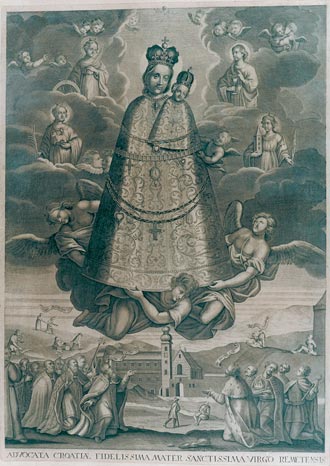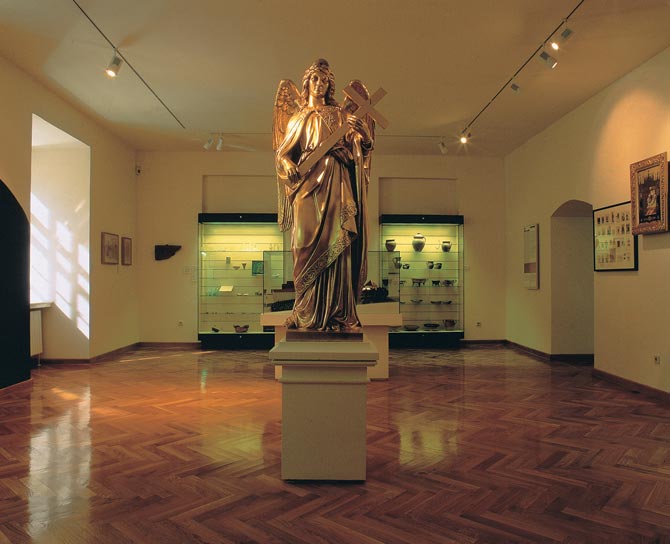Permanent Display 23. Veneration for the Blessed Virgin Mary
 The Marian cult spread in particular during the 17th and 18th centuries. Because of the number of places for the veneration of the Virgin, Zagreb became a Marian city, pious and religious capital of a Christian kingdom.
The Marian cult spread in particular during the 17th and 18th centuries. Because of the number of places for the veneration of the Virgin, Zagreb became a Marian city, pious and religious capital of a Christian kingdom.
The cathedral on Kaptol was, apart from the old dedication to St Stephen, the royal saint, also consecrated to the Assumption of the Virgin. On the front elevation of the council hall of the Kaptol was a mural of the Madonna, the patroness of the Kingdom of Hungary and Croatia. Outside the walls of Gradec, not far from the Kamenita vrata, or Stone Gate, was the municipal almshouse, the hospital built in honour of the Blessed Virgin Mary.
The favourite place of worship of the people of Zagreb is the Madonna inside the Kamenita vrata, the busy main entrance to the upper town. Just before the ninth centenary of the founding of the see of Zagreb, this Madonna was declared the Patron Saint of the city. In 1740 the city senator Ivan Hyaczinthy had the first public monument devoted to the BVM set up in St Mark’s Square. At the end of the 19thcentury, through the joint endeavours of the city and the cathedral, a second public monument to Mary was set up in the square in front of the cathedral.
In addition, the Marian cult began to be nourished by pilgrimages to the Madonna, and various sites of Marian pilgrimages began to come into being. Hundreds of miraculous hearings of prayers are recorded in their chronicles and books of miracles (Liber miraculorum). They were popularized by contemporary woodcuts, holy images that helped to spread piety and the adoration of the BVM, so beloved by the common people, among the faithful and the pilgrims.
The Church of the Blessed Virgin Mary near Zagreb, in the village of Remete, was the closest place for the worship of a statue of the Madonna. Here the sick were cured, and the shrine began to win fame as the Heavenly Apothecary’s.

As early as 1725 people from Zagreb started to make pilgrimages every July to the shrine in Marija Bistrica, the road to which leads over the low mountain range called Medvednica. The pilgrims stop at the chapel to the Virgin in Markuševec, and then at the miraculous Madonna of Čučerje, finally, via the Madonna of the Snows, arriving at Bistrica. Adoration of the Virgin continues today, for the people of Croatia have genuine faith in the Virgin’s being the most faithful Defender of the Faith of Croatia.
Željka Kolveshi

